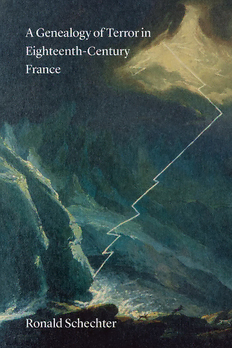
A Genealogy of Terror in Eighteenth-Century France PDF
Preview A Genealogy of Terror in Eighteenth-Century France
a genealogy of terror in eighteenth- century france a genealogy of terror in eighteenth- century france ronald schechter the university of chicago press chicago and london The University of Chicago Press, Chicago 60637 The University of Chicago Press, Ltd., London © 2018 by The University of Chicago All rights reserved. No part of this book may be used or reproduced in any manner whatsoever without written permission, except in the case of brief quotations in critical articles and reviews. For more information, contact the University of Chicago Press, 1427 East 60th Street, Chicago, IL 60637. Published 2018 Printed in the United States of America 27 26 25 24 23 22 21 20 19 18 1 2 3 4 5 isbn- 13: 978- 0- 226- 49957- 4 (cloth) isbn- 13: 978- 0- 226- 49960- 4 (e- book) doi: 10.7208/chicago/9780226499604.001.0001 Library of Congress Cataloging-in-Publication Data Names: Schechter, Ronald, author. Title: A genealogy of terror in eighteenth-century France / Ronald Schechter. Other titles: Genealogy of terror in 18th-century France Description: Chicago ; London : The University of Chicago Press, 2018. | Includes bibliographical references and index. Identifiers: lccn 2017049044 | isbn 9780226499574 (cloth : alk. paper) | isbn 9780226499604 (e-book) Subjects: LCSH: France—Civilization—18th century. | Terror—France— History—18th century. | Terror—Social aspects—France. Classification: lcc dc33.4 .s37 2018 | ddc 303.6/25094409033—dc23 lc record available at https://lccn.loc.gov/2017049044 ♾ This paper meets the requirements of ansi/niso z39.48– 1992 (Permanence of Paper). To J- P contents Preface ix Introduction 1 1. Holy Terror and Divine Majesty 17 2. The Terror of Their Enemies: Kings and Nations 38 3. The Terror of the Laws: Crime and Punishment 58 4. Terror and Pity: The Springs of Tragedy 78 5. Terror and the Sublime 100 6. Terror and Medicine 124 7. Terror before “the Terror”: June 1789– August 1793 142 8. Terror Speech in the Year II 171 Conclusion 197 Acknowledgments 207 Notes 209 Bibliography 261 Index 281 vii preface The French Revolution gave terror a bad name. This is not a facetious statement. For many centuries prior to the Revolution the word “terror” had largely positive connotations. In the Bible God is “terrible,” and this is a good thing. Terror (or terribleness) is one of God’s most important attributes, a sign of his power, justice, and majesty, and terror is the appropriate emotion for human beings to feel in the face of their Creator. Accordingly, theologians from Saint Augustine to the priests of eighteenth- century France described it as “salutary,” and even the stripped-d own theology of the deists made room for a God who inspired terror. As a consequence of their divine right to rule, kings under absolutism acquired godlike features, including the rightful ca- pacity to instill terror in their enemies, and a reliable way of flattering a mon- arch was to call him “the terror of his enemies.” By the end of the eighteenth century sovereign nations could be praised in similar language. Meanwhile, judicial commentators invoked the “terror of the laws” when explaining the need for severe punishments, and they adapted from theology the notion that such terror was “salutary.” Even opponents of the death penalty based their argument on the claim that executions failed to inspire the requisite terror in malefactors. Theater critics praised tragedies that fulfilled Aristotle’s require- ment of imparting terror and pity, though by the end of the eighteenth century they focused increasingly on terror. Aesthetic writers, drawing on Edmund Burke (whose work was translated into French), made terror a precondition of “the sublime.” Even medical writers, learned and popular, propagated the idea that terror was literally salutary—i n the sense of healthful—a nd reported cases of the strong emotion curing ills as varied as malaria, gout, rabies, and epilepsy. Overall, terror had a positive “feel.” The word was reminiscent of power, legitimacy and glory, and it had something sacred about it. All that changed very quickly. Within days of Robespierre’s execution on ix
